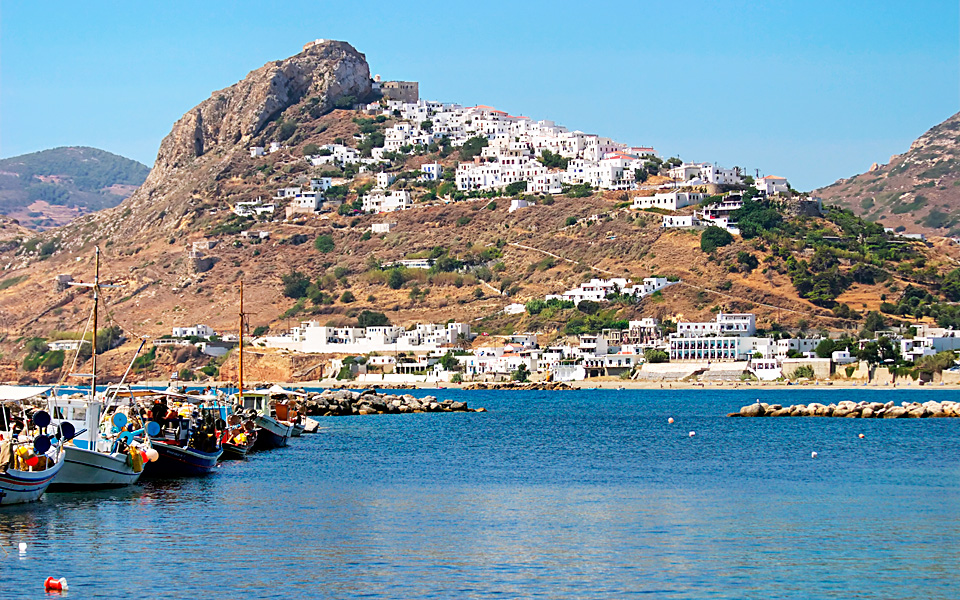Located five hours away from Athens by ferry boat, Skyros, one of the North Sporades islands, measures 223km in size. Both cosmopolitan and unadulterated with countless offerings, I wonder why this island has not gained the wider attention of travelers it deserves. It’s probably better this way. If Skyros were more established on the tourism map then becoming acquainted with the island would have been less of a thrill.
The mild sense of otherworldliness conveyed by the island’s port of Linaria may be found throughout the island, from Hora – the main town – and Atsitsa in the north, to Kohila in the south.
Kohila is renowned for its maple forests and its nests maintained by a rare migratory falcon species that settles on the island between the months of April and October before flying off towards the Indian Ocean.
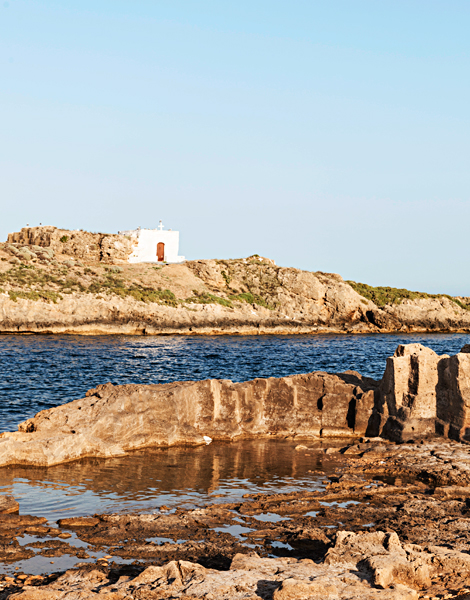
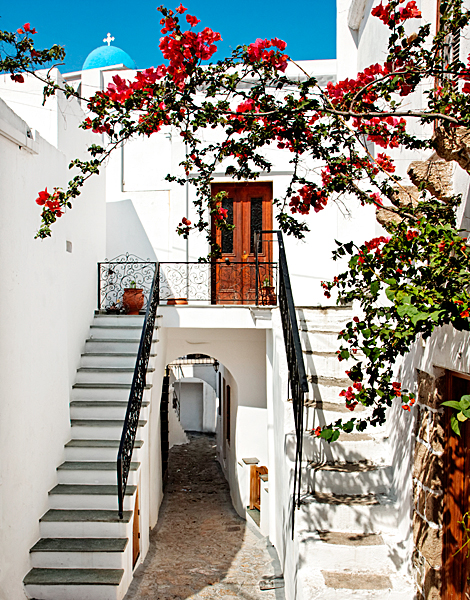
Skyrian horses are one of the oldest and rarest horse breeds on the planet. A small-sized breed that has survived since antiquity, it is elegant, well-shaped, and thin-legged, yet powerful.
A total of 260 Skyrian horses exist in various parts of Greece. Of these, 187 are based on Skyros and roam about in small herds.
We headed up the Ari plateau in a quest to spot some Skyrian horses around Loustria, a lake they are often drawn to. But we had no luck. The lake alone, though, was a sight to behold. A large brown basin, its water was colored an otherworldly shade of purple, making it look more like a gathering point for unicorns rather than actual horses.
The lush vegetation by the lake seems denser than any forest to be found in any Scandinavian territory. We set up a picnic amid this green setting, enjoying fresh bread, myzithra cheese, rice, potatoes, and extremely tender goat meat. Local women, with yellow-and-black scarves around their necks, sang beautiful renditions of traditional table songs as we silently indulged in delicious food.
UNIQUE AFTERNOON
We left the island’s south and headed up to the northern part, making a pit-stop at Atsitsa, a seaside village located opposite an islet of the same name. Further on, we also stopped at a farm to catch a glimpse of the island’s farming activity and were informed about the livestock and local cheese products. We also tried some meat offerings and a local wine produced by the Paneris Winery.
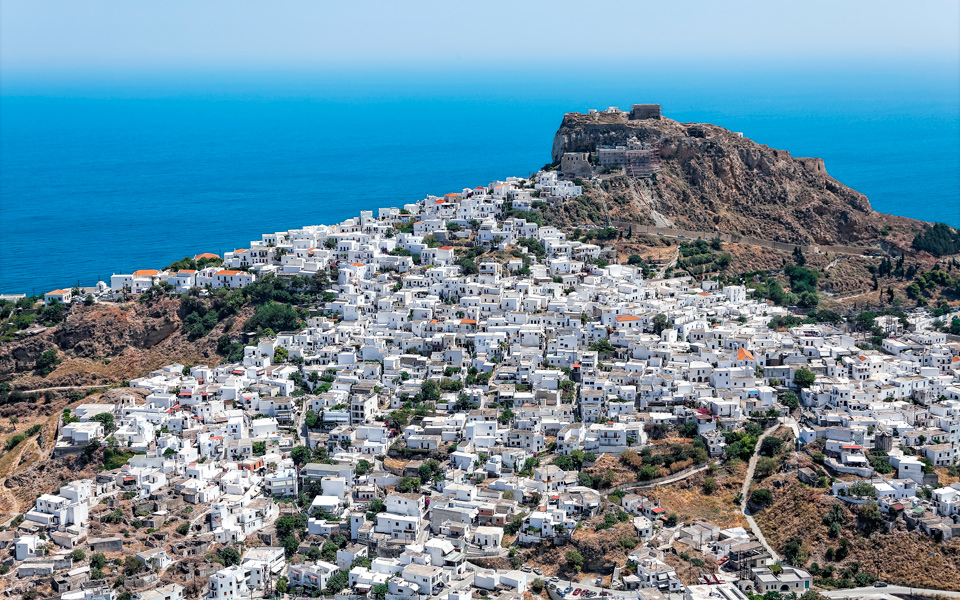
MAIN TOWN – WASHED IN A SEA OF WHITE
After much wandering about, we finally reached Hora, the main town, dominated by white-washed houses. It sits on a bed of rock below a Byzantine castle and the Agios Georgios monastery, dating back to 962. The monastery was founded by Nikiforos Fokas, a Byzantine emperor between 963 and 969. The first thing that impressed me about the main town was its association with two eminent names.
Rupert Brooke, a handsome English baby-faced poet known for his war sonnets, died young here, in 1915, during World War I aboard a French hospital ship. He was buried at a Skyros olive grove. A statue of Brooke stands at the main town’s Eonias Poiisis (Eternal Poetry) square, dedicated to the poet.
Hora also hosts the Manos Faltaits Historical and Folklore museum (details listed below). The museum founder’s father, Konstantinos Faltaits, was a leading journalist, writer and pioneering researcher of rembetika music and the Roma people during the early 20th century. A century earlier, members of his esteemed family were based in Russia.
Putting the cosmopolitan dimension of this location’s past aside, the main town of Skyros is very simple. It features white-washed houses with flower pots in their gardens, lots of little cafes, narrow alleys, a laid back feel, and nothing too fancy or sophisticated to break the overall traditional feel.
Magazia, a coastal town with a beautiful beach, was the last stop of our trip around Skyros. Aliki Lambrou, a local personality and once a dancer at the celebrated Dora Stratou Greek Dances Theatre in Athens, is based in this town.
Hospitable, generous, graceful and pleasant to talk to, she shared thoughts about her involvement with the island’s folk culture, its traditional songs, costumes, celebrations, dances and customs. Whilst there, we also visited an atelier maintained by Giorgos Lambrou, her brother, a gifted sculptor.
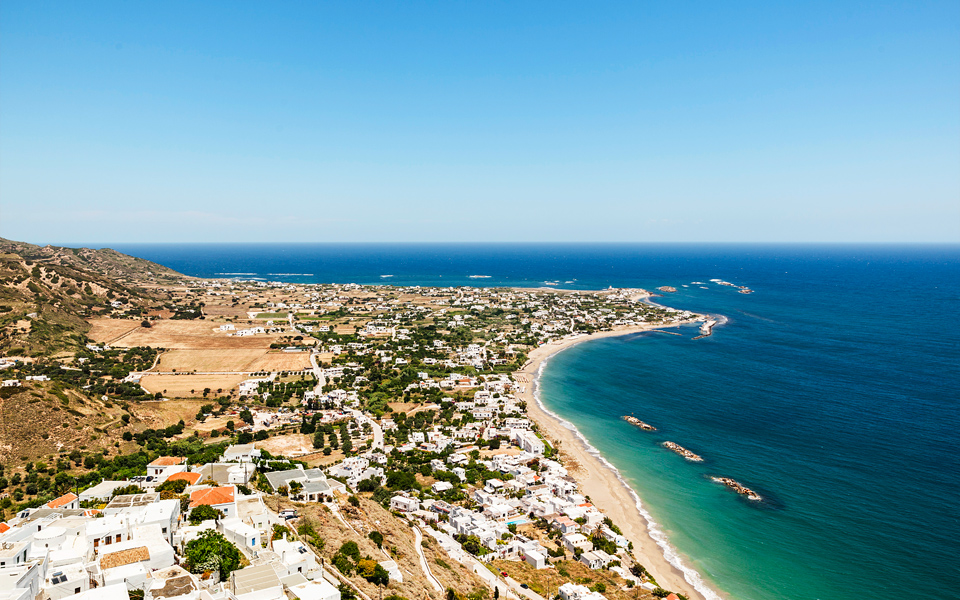
NATURE & ART
FALTAITS HISTORICAL AND FOLKLORE MUSEUM
Founded by Manos Faltaits fifty years ago, this historical and folklore museum is housed in an old mansion linked to the family’s ancestors. On show is a significant collection of historical manuscripts, as well as pottery, porcelain, embroidery, wood carvings, and metal work pieces. One section of the museum focuses on traditional Skyros homes. • Tel: (+30) 22220.91232
ARCHAEOLOGICAL MUSEUM
Located in Hora, next to Brooke Square (Eonia Poiisi), the Archaeological Museum of Skyros exhibits finds discovered in various part of the island, dated from the early Helladic era to the Roman period. A museum section is focused on artifacts from Palamari, the island’s ancient port-town, prominent in the Aegean region during the early and mid Bronze Age. • Tel: (+30) 2222.091.327
SCULPTURE ATELIER
If interested in visiting sculptor Giorgos Lambrou’s impressive exhibition space in Magazia, call the artist’s sister, Aliki Lambrou to arrange. Avoid calling during siesta hours. • Tel: (+30) 2222.091.334
SKYRIAN HORSES RIDES FOR CHILDERN
If visiting the island with young children who enjoy horse riding, consider Ktima (Estate) Mouries for Skyrian horse rides. Three routes of different durations are offered.
Cost: The shortest, a fifteen-minute ride, costs €10; a one-hour ride to the Ahili location costs €30 while a one hour and forty minute ride to Kalamitsa costs €50. Open throughout the week, by appointment. • Tel. (+30) 6947.465.900
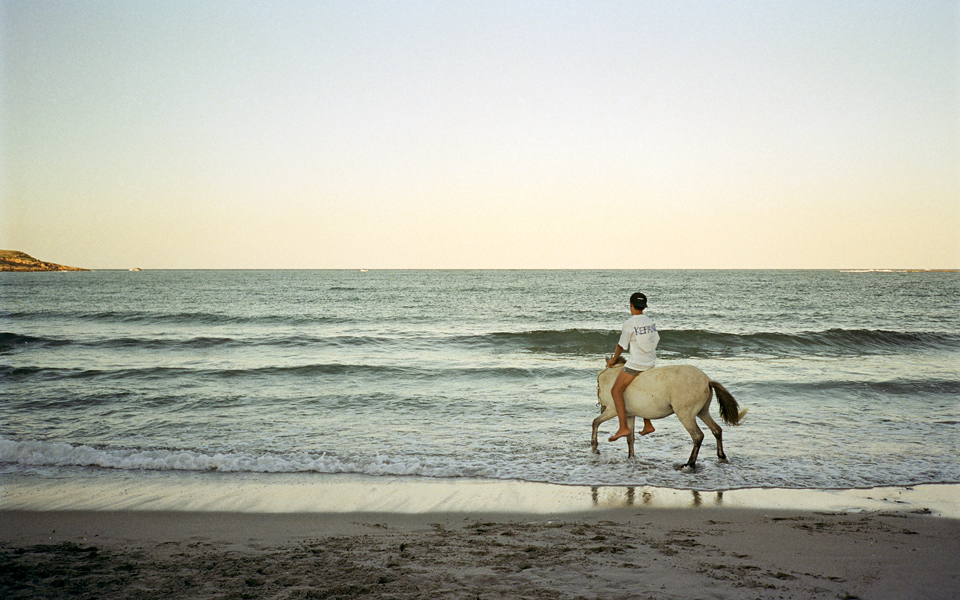
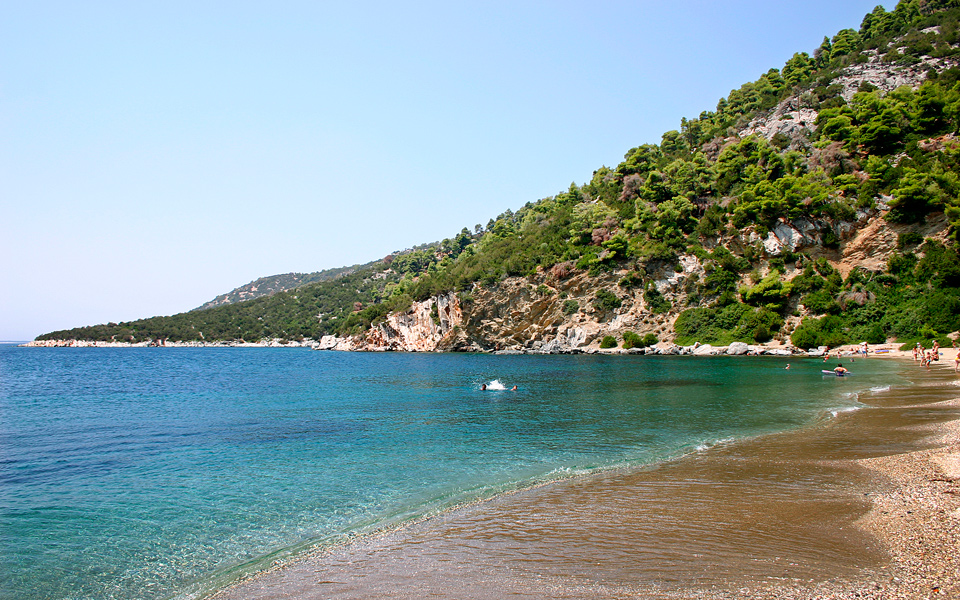
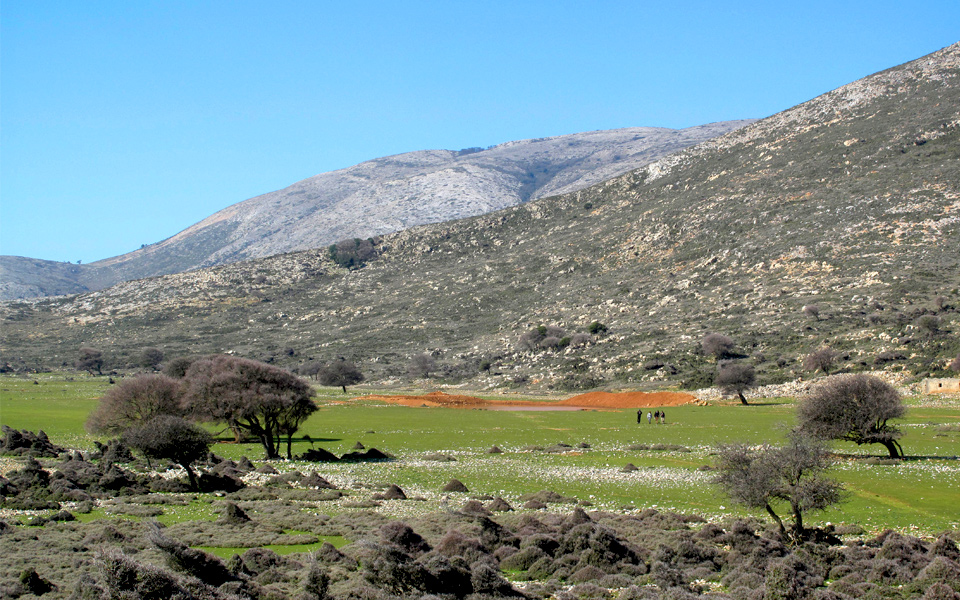
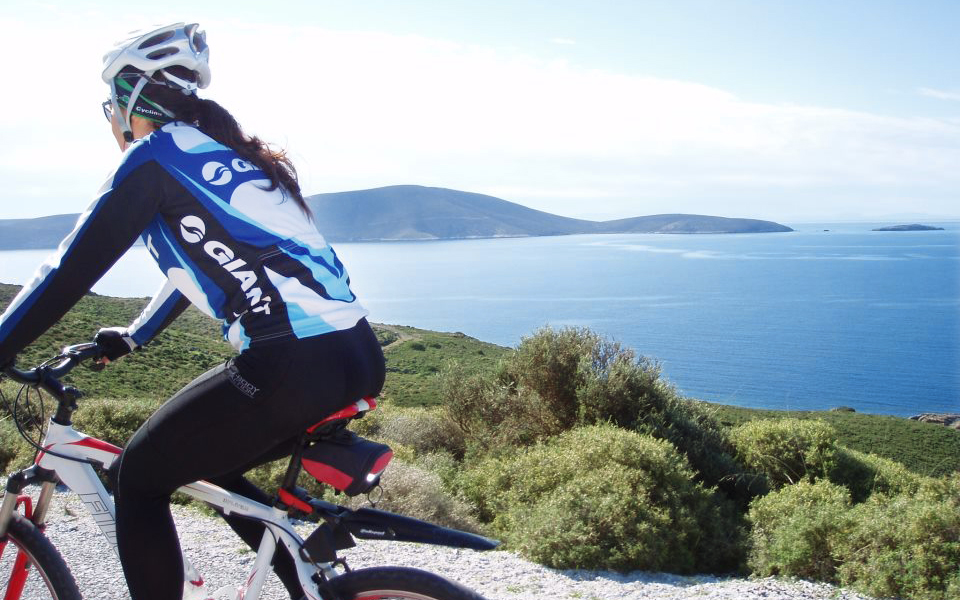
BICYCLE RIDING
Skyros Bike Tours, in a joint effort with the Nefeli Hotel, organizes tours for visitors interested in seeing Skyros on bicycle. The excursion routes vary, depending on each group’s preferences and fitness level. Tour features generally include quests to view Skyrian horses, as well as excursions to old stone bridges, chapels and natural springs.
Cost: Approximately €20 for five hours depending on the route followed • Tel (+30) 6983.107.777 Information also available at the Nefeli Hotel • (+30) 2222.0919.64
SWIMMING
Skyros offers a rich variety of swimming choices such as Petritsa (relatively detached); Kalamitsa (long and pebble-covered); Agios Petros (sandy beach, island’s north); Kyra-Panagia (west); Agios Fokas (windless and distant); Aspous (at the village of the same name); Pefkos (fine sand); Aherounes (close to Linaria port); Kareflou (stones and sand); Molos (organized); and Magazia (sandy).
TREKKING INLAND
Skyros Life, a conservation project for the protection of the island’s natural heritage and biodiversity, has mapped and marked eight routes, primarily inland.
For details, contact the Skyros Life people, Mon-Fri, morning hours • Tel. (+30) 2222.091.618

